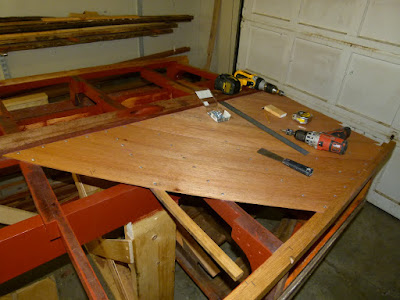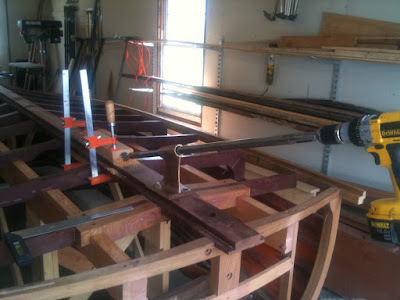I have only done a few boards so far, but I'm happy with how it's going. Installing the intermittent battens is a breeze, since they are steam bent into shape. And no need to send someone into the hull holding while you screw from the outside. The boards go on at a 45 dgr. angle, so you simply mark you spacing, and screw the battens inn as you go. Cleaning up the 5200 is also easy, though not less messy, since you can reach in.
If you work by your self, I think I can recommend this approach over full 8' length of plywood. Though probably a little more time consuming.









